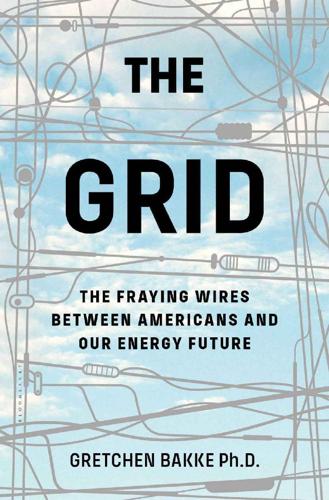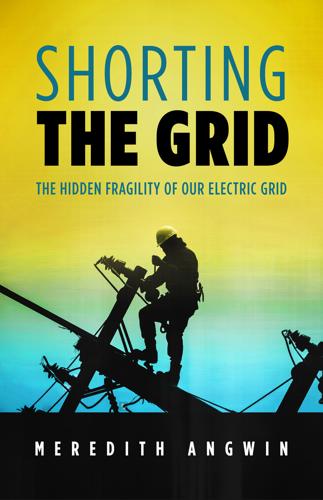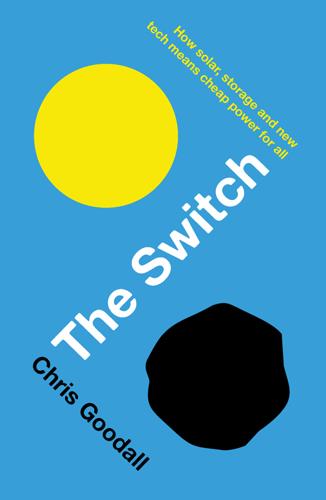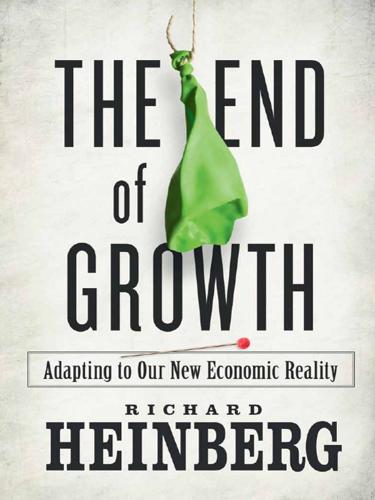Negawatt
description: a unit of power representing the amount of energy saved through conservation or efficiency measures.
13 results

The Grid: The Fraying Wires Between Americans and Our Energy Future
by
Gretchen Bakke
Published 25 Jul 2016
What he saw when he looked at his grocery store was not a power plant but a machine for making negawatts; it was that machine that all of the rest of us had trouble seeing precisely because it looked, and worked, exactly like a grocery store. The lighting was perhaps marginally more pleasant, but otherwise, what had been accomplished was praiseworthy less in relationship to how the power for this store was generated and more in terms of the various ways that the whole thing had been redesigned not to need it. Or, as Amory Lovins (who coined the term “negawatt” way back in 1990) said, “Customers don’t want kilowatt-hours; they want services such as hot showers, cold beer, lit rooms,” and this can “come more cheaply from using less electricity more efficiently.”
…
It helps to further it. The power of nothing is expanded, by undertakings like these, to include lighting from the sun, cooling from fan-made breezes rather than chemical air-conditioning, and wattage not used because it isn’t needed. These saved-watts or negawatts are the electric power a machine or a building or a lighting system or a factory doesn’t use. Though a negawatt is a theoretical, rather than a real, unit of non-power, it serves the purpose of allowing us to measure and quantify avoided consumption. Given this, the store manager’s point is well taken: Why not do the same with less? In this we can see the remnants of the Cardigan Path.
…
(Not “less-is-more,” mind you, but “the same with less.”) At least, this is the goal of those committed to an accounting of negawatts and equally of the man who manages the most energy-efficient Albertsons in the United States. Even ten years ago, the answer to this desire for “the same with less” was that saving kilowatt-hours was expensive precisely because retrofitting inefficient buildings with more efficient technologies is the least cost-effective way to achieve the goal. Negawatts simply cost too much to be worth their while. This is the reason why there is only one Albertsons with a fuel cell and a remarkable cooling and lighting system and there are literally thousands of Albertsons that rely on grid-provided power to run wasteful coolers and poorly designed lighting and HVAC systems.

Rebooting India: Realizing a Billion Aspirations
by
Nandan Nilekani
Published 4 Feb 2016
http://www.businessweek.com/globalbiz/content/nov2009/gb20091116_319929.htm 13. 15 January 2015. ‘Invisible fuel’. Economist. http://www.economist.com/news/special-report/21639016-biggest-innovation-energy-go-without-invisible-fuel 14. 1 March 2014. ‘Negawatt Hour’. Economist. http://www.economist.com/news/business/21597922-energy-conservation-business-booming-negawatt-hour 15. 15 January 2015. ‘Renewables. We make our own’. Economist. http://www.economist.com/news/special-report/21639020-renewablesare-no-longer-fad-fact-life-supercharged-advances-power 16. Dzieza, Josh. 13 February 2015. ‘Why Tesla’s battery for your home should terrify utilities’.
…
Power utilities can use smart grids to improve their operational efficiency for maximal utilization of existing energy sources, as well as the integration of renewable energy sources into the system. Energy efficiency has in fact been dubbed the ‘fifth fuel’, and Amory Lovins of the Rocky Mountain Institute has coined the term ‘negawatt’ to describe power saved through efficiency or conservation.13 Energy efficiency is being driven by innovations across multiple areas.14 Renewable energy sources, in particular solar energy, have boosted the available energy supply, and consumers can now act as small producers and storers, in effect ‘decentralizing’ the power grid.15 Storage is getting cheaper—the batteries that power Tesla’s electric cars may soon be made available for the home as well.16 Smart systems are managing power consumption more efficiently.

Shorting the Grid: The Hidden Fragility of Our Electric Grid
by
Meredith. Angwin
Published 18 Oct 2020
ISO-NE spent more than 700 times as much on oil as on demand response, because they got so few demand-response bidders. Demand response may not be popular with businesses, but it is very popular with some environmentalists—the ones who favor less energy use and favor paying for “negawatts.” (Armory Lovins introduced the “negawatt” concept in 1985. It basically consists of setting economic incentives for using less electricity.) If you have connected Energy Star appliances and a smart meter, you have the equipment to be enrolled in a demand-response program. The big question is whether joining this program would be voluntary on your part or whether the utility would simply enroll you.
…
“Jake,” 84 E economic dispatch, 90–91, 149 EEme, 320 Electric Power Research Institute (EPRI), 36, 39 electric quality, renewables and, 209 electricity, generation in real time, 17–18, 25–26, 50. see also power grid electricity imports, 128, 131, 135–141, 158 electricitymap.org, 309, 324 electromagnetic radiation, line loss and, 23 emissions floor price rules and, 357–358 Ontario, Canada and, 355 Energy Efficiency groups, 119–120 Energy Institute, 83 Energy Star appliances, 321, 322 engineering discipline, lack of, 206–207 Enron, 10, 78 Entergy, 97, 157, 263–264, 328, 331 Environmental Defense Fund (EDF), 256 Eppstein, Margaret, 156 Equivalent Peak Period Forced Outage Rate (EFORp), 118 ERCOT, 89 Estonia, flexible pricing and, 316 Evslin, Tom, 319 Exelon Corporation, 127, 130, 330, 331 F “fairness,” RTO required to maintain, 121–123 Falmouth, Massachusetts, removal of wind turbines and, 299 fast-start plants, 200 Federal Energy Regulatory Commission (FERC) Bonneville Power Administration and, 236 citizen influence of, 363–364 Competitive Auctions with Sponsored Policy Resources (CASPR) and, 274–277 fuel neutrality and, 60, 121–123, 143, 226 fuel security ISO-NE ruling, 143–144 ISO-NE MOPR and, 266–269 jump ball filings, 109–113, 115–124 lack of transparency in RTO areas, 105, 107 market manipulation in California and, 78 Minimum Offer Price Rule (MOPR) and, 271–272 Mystic Generating Station and, 96 orders of, 72–73, 183, 227–228 socialization of transmission lines and, 160, 163–168 Winter Reliability Program and, 51, 109 Federal Trade Commission, 245 financial crisis of 2007, 3–4 FirstEnergy, 263–264, 328–329, 331 flexibility, grid, 206–207 “floor price” rules, Ontario’s, 357 Forward Capacity Auctions, 157, 283, 291 forward capacity market (FCM), 117 Forward Capacity Market, New England, 136 fossil fuels, “beating the peak” and, 176–177 fragility, grid, 5, 7, 79, 123, 345, 345–346 France, CO2 emissions, 309–310 fuel neutrality, 60, 103–108, 112–113, 121–123, 183, 226, 284, 330 fuel security, 122–123, 125–131, 136, 140–142, 143–153, 158, 307–308, 323, 333 G Gates, Bill, 340 Gattie, David, 83 generation utilities (merchant generators), 41–43, 77–79 generators, personal, 45–46 George, Ann, 270 Germany, CO2 emissions, 309–310, 324–325 Gheorghiu, Iulia, 276 Gifford, Ray, 75 Girouard, Coley, 282, 283 Glick, Richard, 123, 269 Global Adjustment price, 354–356 Goldstein, Joshua, 310, 311, 313, 353 Grand Coulee Dam, 195 Great Britain, renewables-alone and, 312 Green Mountain Power, 301, 302 Green New Deal movement, 197 Greenpeace, 297–302, 342 Greenpeace, solar project in India, 304–305 Greenstone, Michael, 237–239 greenwashing, 62, 169–174, 178–179, 302 grid, as machine, 281–283 grid governance, choice of, 348–351 grid price, 51, 88, 184, 227, 228, 233 ground faults, 210–211 H Hallquist, Christine, 201, 236 Hargraves, Bob, 339 high-quality grid, components of, 343–346 Hittinger, Eric, 30 hot weather planning, 170–174, 175–179 Human Development Index (HDI), 310 hydro plants cold weather and, 52–53 intermittent or steady power, 194 load-following plants and, 186 Ontario, Canada and, 356–357 responsiveness of, 27 Wind-Water-Solar, 195–197 Hydro-Québec, 137, 158, 240, 244 I Independent Electricity System Operator (IESO), 353, 354, 358 Independent System Operators (ISOs), 34, 72. see also Regional Transmission Organizations (RTOs) clearing price and, 92 India coal and, 304, 310 failure of solar with battery backup, 304–305, 342 Indian Point, 256, 328 Integrated Resource Plans (IRPs), 282–287 Integrating Markets and Public Policy (IMAPP), 227 Intergovernmental Panel on Climate Change 2014 report, 258 intermittent power generators, 5, 151, 184, 189, 191, 194–195, 199, 201–202, 206–207, 209, 219, 236, 238, 240, 270, 347, 349 internal combustion plants, 26–27 Inventoried Energy Program, 123 Investment Tax Credit, 223 Iowa, time-of-use pricing and, 316 Ireland, CO2 emissions of, 204 ISO-NE Addendum Report of, 130–131, 141 balancing authority and, 26 Cold Weather Operations report of, 53–56, 145 Competitive Auctions with Sponsored Policy Resources (CASPR) and, 261–262 CONE and, 269–270 Consumer Liaison Group Coordinating Committee, 167, 310 Consumer Liaison Group of, 303–308 fair share of system costs and, 175–176 FERC rulings and, 271–272 fuel neutrality and, 103 fuel security and, 125–131, 143–153 Fuel Security Report of, 333 jump ball filings, 109–113, 115–124 Market Rule proposals approved by NEPOOL, 110 Minimum Offer Price Rule (MOPR) and, 261–262 oil storage program of, 61–62 out-of-market funded plants and, 271 Pay for Performance plan of, 61–63, 262, 330 proposals for new auctions, 146–147, 149, 156, 157 reliability and, 156–158 renewables and, 192–193 socialized transmission lines of, 158–161 state mandates and, 227–228 summer planning and, 172–174 Synapse Report and, 133–141 Winter Reliability Program of, 49–51, 58, 59–63, 145, 322 J Jacobson, Mark Z., 195–196, 216 Jenkins, Jesse, 216 Johnson, Lyndon, 341 Jones, Charles E., 329 Jones Act, 128 journalists, banned from meetings, 104, 107, 283, 363 jump ball filings, 109–113, 115–121 just-in-time, natural gas, 46–47, 74, 122–123, 144, 146, 151, 172, 257, 334, 346–348, 362, 365 K Kavulla, Travis, 348 Kelly, Kristin, 248 Kingdom Community Wind Project, 31–32, 210, 245 Klein, Tony, 235 kludge system, all-renewables system as, 207 Knauer, Tim, 253 Kreis, Don, 107, 128–129 Kuser, Michael, 146 kWh auctions, 59, 228, 229, 233 L Larson, Matthew, 75 line loss, 23 liquified natural gas (LNG), 55–56, 61, 111, 125–126, 128, 131, 137–139, 330. see also natural gas lithium, 20, 218–219 load shedding. see rolling blackouts load-following plants, 186, 194 load-serving entities (LSEs), 41–42, 349 local citizens groups, 362–363 local control of grid, 361 “lost savings,” 84–85 Lovins, Armory, 322 M MacKay, David, 311–312 Maine, smart meters in, 319 maintenance, plant, 78 Malhortra, Ripudaman, 218 Maloney, Tim, 196 Marcus, William B., 83 market-oriented solutions, 39–44, 63, 81–85, 146 Marshall, Jason, 165–166, 167 Mays, Jacob, 264 McKibben, Bill, 301 merit order. see economic dispatch methane, 259 methane digesters. see cow power (methane based) Meyer, Eric, 253, 254 microgrids, 303–305, 341–342 Midcontinent Independent System Operator (MISO), 276 Minimum Offer Price Rule (MOPR), 99, 100, 222, 261–262, 266–274, 271–273, 273, 283 Mystic Generating Station, 96, 126–127, 130, 134, 143, 330, 331 N N minus 1, 155–157, 159 N minus 2, 156 “name that fuel,” 60–62 nameplate capacity, 265–266, 272 Nath, Ishan, 237–239 National Bureau of Economic Research (NBER), 199, 201 natural gas backup for renewables, 199–200, 202–204, 214, 286, 346, 347, 362, 365 cold weather and, 49–51, 55–56 combined cycle plants, 203 CONE and, 270 emissions and, 259–260 FERC rulings and, 122 just-in-time, 46–47, 74, 122–123, 144, 146, 151, 172, 257, 334, 346–348, 362, 365 kept onsite, 111 load-following plants and, 186 Ontario, Canada and, 356 pipelines, 9, 46–47, 50, 55–57, 60, 128, 134, 138, 348 profitability of, 4–5, 98–99 protected by RTO rules, 283 renewables and, 152, 199–200, 202–203, 266 rise in price of, 335 summer planning and, 172–174 trend toward increased use, 99–101, 364–366 wind power and, 152 negative energy prices, 208, 357 “negawatts,” 322 net metering, 201–202, 226, 235, 285, 291–295, 293, 295, 300, 302, 305–306, 351, 361 Nevada, net-metering in, 294–295, 351, 361 New England Power Pool (NEPOOL) Addendum Report, 141 first jump ball filing, 108–112 fuel security and, 144, 146 IMAPP process and, 227 lack of transparency in, 104–108 Participants Committee of, 105–108, 111, 130–131, 268 Pay for Performance payments and, 330 reporters banned from meetings, 104, 107, 363 second jump ball filing, 115–121 Synapse Report and, 130 New England States Committee on Electricity (NESCOE), 165–166, 167 New Jersey, smart meters in, 317 New York Clean Energy Standard, rally for, 252–254 New York Independent System Operator, 95 New York Public Utilities Commission, 255 New York, Zero Emission Credits (ZECs) and, 252, 255–258 NextEra Energy, 245 nickel-iron batteries, 219 Nolan, Ken, 235 non-spinning reserve, 27. see also fast-start plants North American Electricity Reliability Council, 217 Northern Pass line, 158 NOX (nitrogen oxide) emissions, 204–205 NOX (nitrogen oxides) emissions, 251–252 nuclear power advantages of, 365 baseload plants, 186 capacity factor of, 194 cold weather and, 52–53 emissions and, 251–252, 258–260 Entergy leaving RTO areas and, 328–329 high-quality grid and, 345–346 increased safety requirements of, 344–345 jump ball filings and, 111 low bidding by renewables and, 265 Ontario, Canada and, 356–357 profitability of, 4, 98–99 renewables and, 311–312 RTO price changes and, 334 subsidies and, 329 ZECs and, 252, 255–258, 262 zero emissions and, 252 NYISO, 354 O Ohio, ZECs and, 257 oil cold weather planning and, 49–55 ISO-NE’s oil storage program, 61–62 kept onsite, 61–62, 111, 145, 284 Ontario, Canada; RTO of, 353–359 Operational Fuel-Security Analysis, ISO-NE Report, 125–131 Order 888, FERC, 72 Order 889, FERC, 72 Order 1000, FERC, 160, 163–168, 183, 227–228 Order 2000, FERC, 72 Oslo, Norway; spot-indexed prices and, 316 Otter Tail Power, 21–22, 163 “out of market” payments, 263 out-of-market compensation, 112, 127, 263–267, 271–272, 275, 290 out-of-market revenue. see out-of-market compensation overbuilding, 36, 42, 216–218, 220, 273, 286, 358–359, 362, 365 oversupply, in California, 350 P Palisades nuclear plant, 328 Participant Committee, RTO, 332, 362–363 Participants Committee, NEPOOL, 105–108, 111, 130–131, 268 Pay as Bid, 94–95 Pay at the Clearing Price, 94 Pay for Performance, 51, 61–63, 115–124, 262, 330 subsidies and, 263 peak usage, 175–179 Pennsylvania, ZECs and, 257 Perry, Rick, 60–61, 122, 126, 365 personal responsibility, vs. civic choices, 308–312 PG&E, 179, 316–317 Pilgrim nuclear plant, 97, 328 pipelines, natural gas, 9, 46–47, 50, 55–57, 60, 128, 134, 138–139, 172, 330, 348 PJM RTO, 266, 268, 276 “Policy Grid,” vs.

Business Lessons From a Radical Industrialist
by
Ray C. Anderson
Published 28 Mar 2011
And as I write this, Duke has just applied for regulatory approval to install solar panels at homes, schools, stores, factories, and other locations in that state. What’s more, Jim has said for the record that he would rather invest in his customers’ efficiency projects than in new generating capacity. And he’s right on target. Why not build “nega-watts” in the form of high-efficiency appliances, air conditioners, and lighting, instead of buying new coal or nuclear megawatts? That is a new paradigm, though it’s based on a concept that Amory Lovins has pushed for decades. I guess some things just take a while. As I’ve said, it’s not just rising oil prices or advances in the laboratory that are driving these deals.
…
Plus, as landfills are filled, new sites have to be found and purchased. It gets expensive very, very fast. What if we could save the city money on every ton they didn’t have to truck off to a landfill, and capture a piece of that for ourselves?” At Interface, we call electricity saved through smart conservation by Amory Lovins’s term, nega-watts. What Gonen was talking about was “negatons.” But there was still the problem of getting enough people to recycle. “We couldn’t earn a decent profit unless we boosted the number of households that recycle way up,” said Gonen. His solution was deceptively simple: use a high-tech bin to measure how much recycling a family contributes and reward them by giving them RecycleBank Dollars that they can turn around and spend at local stores.
…
mineral water industry minority-owned services Mission Zero (Interface’s) modern culture, flawed mindset of mollusks moon, going to Moore, Betty “Mount Sustainability” Muir, John municipalities, recycling efforts of Murray, William Hutchinson Napa Valley, California National Association of Evangelicals National Park Service Native Energy nature as infrastructure learning from productivity of, must not be diminished recycling by, with zero waste services of needs, vs. wants nega-barrels nega-energy nega-watts Nelson, Eric Nelson, Gaylord Nestlé Waters Newcomen, Thomas Newton, Mark New York City, recycling in Next Ascent summit meeting nitrogen oxide noblemen, and evolution of ethics Northern Ireland Interface facility nuclear industry, subsidies to nylon inputs of recycled substitutes for Oakey, David ocean, as carbon sink office of the future carpet tiles in off-quality product oil discovery of drilling for global demand global production imports oil consumption, like drug addiction oil exporting countries, profits of oil industry costs of, passed on to society subsidies to sustainability programs of, so-called oil prices effect on driving price shock of 1972 rising OPEC orders, getting, like a heartbeat organized chaos Orr, David overshoot packaging reuse of as waste Pandel division paper, recycling of paradigms, new Parnell, Lindsey Patagonia Paulson, Henry payback period Paydos, Paul PepsiCo perfect storm of 2001 (Y2K, dot-com bubble, 9/11) perpetual motion machine, sustainability likened to Peterbilt pharmaceuticals, in drinking water Picard, John Pickens, T.

The Switch: How Solar, Storage and New Tech Means Cheap Power for All
by
Chris Goodall
Published 6 Jul 2016
Ninety per cent of Californian homes have so-called ‘smart’ meters that collect information on electricity usage minute by minute and send it back to utilities or companies like OhmConnect. The app looks at the pattern of usage over the last days and weeks and estimates whether the homeowner has run the house with a lower than expected amount of electricity during the ‘OhmHour’. If so, a payment is made; the user gets 80 per cent of the price that his ‘negawatts’ (negative watts) have been sold for and OhmConnect keeps the rest. The company says some of its users have made more than $200 in the past year from cutting their electricity use every time the alerts have been sent. More typical cash rewards have been about $100. This is not a big sum and not worth the time and inconvenience to get.

Food and Fuel: Solutions for the Future
by
Andrew Heintzman
,
Evan Solomon
and
Eric Schlosser
Published 2 Feb 2009
The report “State Scorecard on Utility and Public Benefits Energy Efficiency Programs: An Update” is available at ACEEE’s web site at http://www.aceee.org/. 16. This and other information about energy efficiency can be found in A. Lovins and H. Lovins, “Mobilizing Energy Solutions.” 17. A. Lovins, “Negawatts, 12 Transitions, Eight Improvements and One Distraction” Energy Policy 24, no. 4: 331–343. See also World Alliance for Decentralized Energy, “World Survey of Decentralized Energy — 2002/2003,” http://www.localpower.org/. 18. Productivity increases when workers can see better what they’re doing, breathe cleaner air, hear themselves think, and feel more comfortable.

Green Metropolis: Why Living Smaller, Living Closer, and Driving Less Are Thekeys to Sustainability
by
David Owen
Published 16 Sep 2009
But it does suggest that we can’t solve our energy and emissions problems by putting a few solar panels on everyone’s roof and proceeding as before. (The biggest source of energy at Natural Bridges, by comparison with the period before 1980, is not solar panels but forced conservation, in the form of the park’s two-thirds reduction of its pre-solar power demand—a form of virtual energy that Amory Lovins has usefully named the “negawatt.”) A further complicating factor regarding all forms of electric power is that demand for electricity in the United States is certain to change radically in coming years. There has been much talk, for example, of replacing more and more gasoline-powered cars with electric cars (which run on rechargeable batteries) and with so-called plug-in hybrids (which run on rechargeable batteries when possible and switch to a gasoline engine when the batteries are depleted).

The God Species: Saving the Planet in the Age of Humans
by
Mark Lynas
Published 3 Oct 2011
In the Maldives as elsewhere, energy efficiency is central. It will always be much cheaper to stop wasting energy than to build energy-generating capacity to cover unnecessary use, whether that generating capacity is powered by diesel, nuclear fission, or the sun. (The energy-efficiency guru Amory Lovins calls these saved units “negawatts,” in a play on megawatts.) In the Maldives, antiquated fridges and air-conditioning systems place a huge burden on electricity supplies; much of this could be saved if buildings were better constructed or retrofitted to absorb less solar heat and lose less cooling through doors and windows. In cold countries, fantastic amounts of energy are wasted through badly insulated roofs and walls, not to mention drafty doors and windows.

The End of Growth: Adapting to Our New Economic Reality
by
Richard Heinberg
Published 1 Jun 2011
His 1998 book Factor Four argued that the US could simultaneously double its total energy efficiency and halve resource use.26 More recently, he has upped the ante with “Factor 10” — the goal of maintaining current productivity while using only ten percent of the resources.27 Lovins has advocated a “negawatt revolution,” arguing that utility customers don’t want kilowatt-hours of electricity; they want energy services — and those services can often be provided in far more efficient ways than is currently done. In 1994, Lovins and his colleagues initiated the “Hypercar” project, with the goal of designing a sleek, carbon fiber-bodied hybrid that would achieve a three- to five-fold improvement in fuel economy while delivering equal or better performance, safety, amenity, and affordability as compared with conventional cars.

The new village green: living light, living local, living large
by
Stephen Morris
Published 1 Sep 2007
We will examine how the systems in your home can work with and against each other to alter your home environment. If I had to choose only one message to rise like cream to the top of my milk bottle full of advice, it would be that energy efficiency is an investment, not a hardship. The cheapest kilowatt is one you don’t have to buy, a concept called negawatts. Studies show that the cost of buying efficiency is about half the cost of buying energy. Purchasing a product that uses less energy than another similar product has significant, long-term impacts on your energy consumption and costs. The price you pay to buy a new refrigerator, light bulb, or furnace is a small percentage of the price you will pay to operate it over its lifetime.

Boom: Bubbles and the End of Stagnation
by
Byrne Hobart
and
Tobias Huber
Published 29 Oct 2024
Households struggle when the air conditioner or refrigerator stops working during a heat wave. Factory operators don’t like it when they’re paying people to work but the machines aren’t working. But crypto mining can instantly stop and instantly start back up again. So it’s a competitive provider of “negawatts,” or on-demand reductions in electricity demand. Renewables tend to be less predictable than other kinds of power, so, in an indirect sense, crypto mining operates as a subsidy for them. 296 Bitcoin is arguably the asset with lowest counterparty risk in the world. While scams, hacks, and exchange implosions are often misattributed to Bitcoin, they have nothing to do with the network’s integrity.

Taming the Sun: Innovations to Harness Solar Energy and Power the Planet
by
Varun Sivaram
Published 2 Mar 2018
Currently, utilities have various programs in which they pay customers to turn down the air conditioning on a hot summer day when high demand is straining the grid (to cite just one example). In some cases, utilities can directly control customer appliances to crank up the thermostat a few degrees.42 And some large industrial power customers already regulate their demand at a greater scale. In most of the major U.S. electricity markets, they can sell negative megawatts (“negawatts”) of power savings alongside the megawatts of power supplied by conventional power plants.43 But this is just the beginning for demand response. A wave of start-up companies has persuaded venture capital investors to fund demand-side innovations, early returns from which are much more promising than the flopped investments a decade ago in clean energy supply technologies.44 As smarter grids gain the ability to harness a wide range of distributed energy resources and coordinate them, a much wider range of customer equipment—large and small—could act in concert to modulate demand in a way that matches up with intermittent renewable energy supply.

Conspiracy of Fools: A True Story
by
Kurt Eichenwald
Published 14 Mar 2005
The papers, some of which were prepared for other lobbying efforts, are headed “National Energy Policy: Priorities,” “Examples of Problems Due to Lack of Open Access,” “Emergency Measures for Western Power Markets,” “Action Plan for Implementing Findings & Principles for Joint Action on Western States Power Markets,” “ESPA Letter on Open Access,” “Summary of Democratic Alternative Bill,” “Federal Demand Buy-Down (‘Negawatt’) Proposal,” “LNG,” and “Carbon Dioxide.” Finally, the author also reviewed copies of notes taken during the meeting by a participant. 17. Dialogue of Skilling’s conference call from an official transcript of the discussion. 18. Several news outlets reported the Skilling gaffe. For example, see “Skilling, Analyst Verbally Butt Heads,” Reuters, April 18, 2001; and “Skilling Speaks His Mind,” Gas Daily, April 18, 2001. 19.